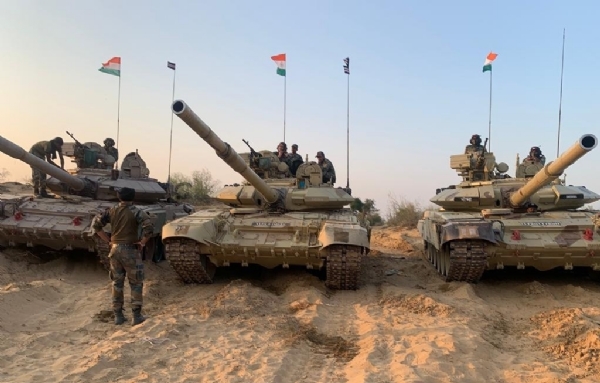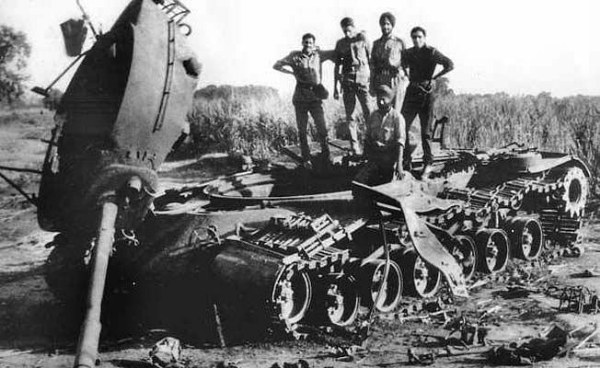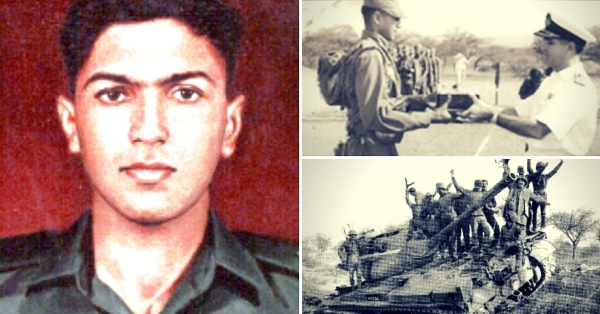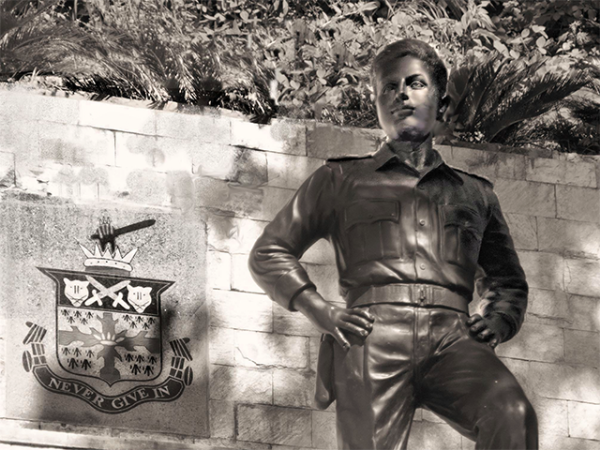Indian Tankmen and their beasts: Remembering the hero of Basantar on Armoured Day
Total Views | 399
"It's just a matter of time. Long ago, men clad in armour rode into the forefront of the battle. They attacked with suddenness, violence and massed weight. They were the first impact that paralyzed the enemy and destroyed its will to fight. Earlier, they were called knights and today, they are called the 'Tankers'."
India on May 1st this year celebrated the 83rd Armoured day, in order to pay tribute the bravehearts from the Tank regiment, who laid their lives for their motherland and to salute the bravery showcased by the armoured corps of the Indian army during all the important battles that India has fought till date.

The Armoured Corps of the Indian army is the successor to the erstwhile cavalry. Formed in 1947 from two-thirds of the personnel and assets of the Raj's Indian Armoured Corps. The current count of the Indian army's armoured regiments ranges roughly between 45 to 50. The armoured regiments are an integral part of the Indian army ever since the British Raj. This is evident from the names of the regiments. Every armoured regiment has been numbered but there is a little difference which can be observed from the title of the regiment itself that indicates whether the regiment was raised after independence or during the British rule.
The regiments formed in the post-independence period include the words 'armoured regiment' in their title. Whereas, the ones formed under the British rule include the words, 'Cavalry', 'Horse' and 'Lancers' in the title. The Poona Horse (17 Horse) also known as 'Fakr-e-Hind' is the most decorated armoured regiment of the Indian army that was raised in 1820, during the British Raj. Thus the name is Poona 'Horse'. The 56 Armoured Regiment is Indian army's youngest tank regiment that was raised on Oct 1, 2011. The regiment is also proudly called as the 'Lionhearts'.
This differentiation in the name of these regiments has a particular and basic story behind it. During any war, Infantry or the army regiment with soldiers ascending on their feet head foremost to attack the enemy. They are backed by the artillery that are are mounted at a fixed spot to target and destroy the strategic establishment of the enemy, providing support to the infantry. But there is one regiment which moves between the Infantry and artillery divisions and this is the armoured or mechanized regiment. They are capable of hitting the enemy with utmost impact and leave the enemy severely damaged.
In earlier times, instead of the highly mechanized tanks, this role was played by the cavalrymen, who would fight the enemy with speed, mobility and power and provide strong support to the infantry men fighting ahead of them and behind the cavalrymen would be the mounted cannons, which is similar to today's artillery regiment. This history remains to be the core reason behind the inclusion of words like 'cavalry', 'horse' and 'lancers' in the titles of some of the armoured regiments, even today.

There are several battles that have proven the might of the armoured regiments but some have made it through time as a live story of heroism and these stories talk more about the highly powerful psyche of the tankmen than about the power of the mechanized beasts, that the tankmen control. The Battle of Basantar, fought during the 1971 Indo-Pakistan war in Punjab remains to be one such battle, which gave India its youngest Param Vir Chakra awardee.
The Battle of Basantar is considered to be the largest tank battle of the subcontinent. The story is as realistic as it may feel like a scene from a war movie. It was the time when 3 Indian tanks were to fight against 14 Pakistani tanks. Capt V Malhotra, Lt Avatar Singh Ahlawat and 2nd Lt Arun Khetarpal manned the Indian tanks. As in every other Indo-Pak war, the Pakistanis were in desperate effort to cut Kashmir off the rest of India. Therefore, the Pakistan army had planned to target Punjab's Shakargarh sector to fulfil their aspirations. The answer from the Indian side to the Pakistani plan was a bold retaliation by crossing the Basantar river. First step into it was when the Indian army built a bridgehead on the river to cross it and cleared all the landmines on the way. Both the nations were about to witness the deadliest tank battles ever fought between the two.

While we read history, we often come across incidents where even with the least ammunition or manpower, there will be an army who kiss victory merely with their higher morale and patient moves in the battles. When the Indian tankmen started the battle they obviously knew the potential of 3 tanks against 14 tanks. They knew they were in the battle for destruction, but even if it was until the last breadth it was giving the enemy the worst of their times on the planet. And that is exactly what happened in the battle of Basantar, where the Indian army was determined to destroy the enemy, no matter what it costs and thus was in an extremely attacking stance.
As the battle started, without any severe damage on Indian side, Pakistan lost 3 of its tanks. the battle went on and Capt Malhotra's gun ceded. Soon the battle remained between 2 Indian tanks fighting against 7 Pakistani tanks. Later, Lt Avatar was injured but with a continued retaliation the Indian tanks were capable of destroying 3 more of the enemy's tanks. But that had left India fighting the battle with only one tank manned by 2nd Lt Arun Khetarpal that was fighting against 4 enemy tanks.

Living up to the principles of the Indian army, 2nd Lt Arun Khetarpal decided to continue the retaliation. While he was fighting the enemy, a shell from the enemy's side set Khetarpal's tank on fire. The circumstances didn't really seem much in India's favor but so didn't seem in the beginning itself. Khetarpal's Commander ordered him abandon the tank and retreat. But the spirit at which the Indian tankmen had started fighting the battle had sustained all through the while. This was evident from 2nd Lt Arun Khetrapal's words to continue the battle even after his tank was on fire and his Commander's order. History quotes him saying;
"No Sir, I will not abandon. My main gun is still working and I will get those bastards."
With Arun's continued retaliation, two more of enemy's tanks were taken down and another one was abandoned by them leaving the battle to be fought between one tank on each sides. After a few attacks in the one-on-one battle, Arun finally took a direct hit on the enemy tank leaving it destroyed and abandoned. However, 2nd Lt Arun Khetarpal, after bringing home victory with India taking control of 1000 sq km of land after the battle, succumbed to his injuries. Second Lt Arun Khetrapal's valour deserved the Param Vir Chakra, which was awarded to him posthumously, making him the youngest Param Vir Chakra awardee of the country.






